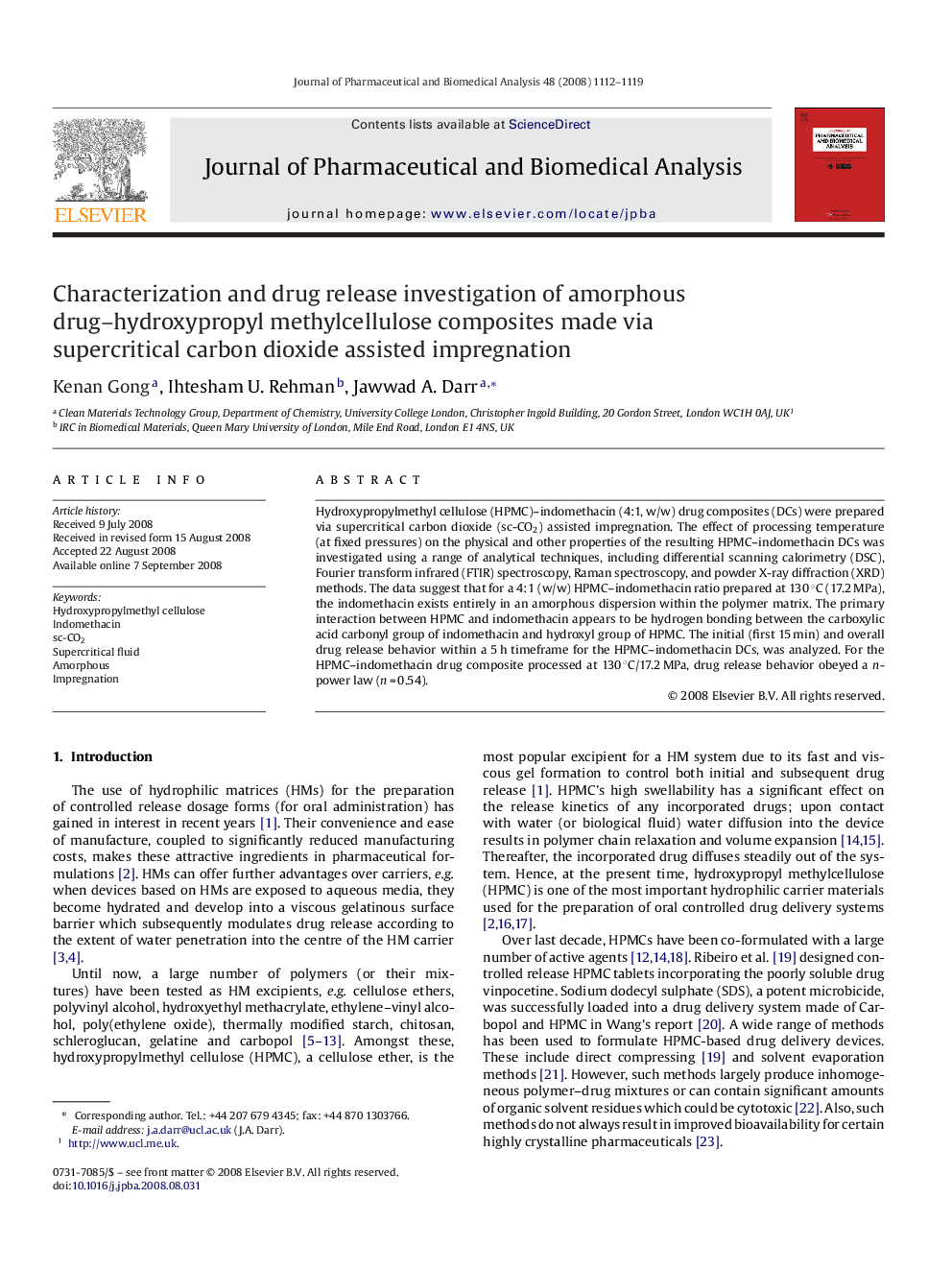| Article ID | Journal | Published Year | Pages | File Type |
|---|---|---|---|---|
| 1222519 | Journal of Pharmaceutical and Biomedical Analysis | 2008 | 8 Pages |
Hydroxypropylmethyl cellulose (HPMC)–indomethacin (4:1, w/w) drug composites (DCs) were prepared via supercritical carbon dioxide (sc-CO2) assisted impregnation. The effect of processing temperature (at fixed pressures) on the physical and other properties of the resulting HPMC–indomethacin DCs was investigated using a range of analytical techniques, including differential scanning calorimetry (DSC), Fourier transform infrared (FTIR) spectroscopy, Raman spectroscopy, and powder X-ray diffraction (XRD) methods. The data suggest that for a 4:1 (w/w) HPMC–indomethacin ratio prepared at 130 °C (17.2 MPa), the indomethacin exists entirely in an amorphous dispersion within the polymer matrix. The primary interaction between HPMC and indomethacin appears to be hydrogen bonding between the carboxylic acid carbonyl group of indomethacin and hydroxyl group of HPMC. The initial (first 15 min) and overall drug release behavior within a 5 h timeframe for the HPMC–indomethacin DCs, was analyzed. For the HPMC–indomethacin drug composite processed at 130 °C/17.2 MPa, drug release behavior obeyed a n-power law (n = 0.54).
